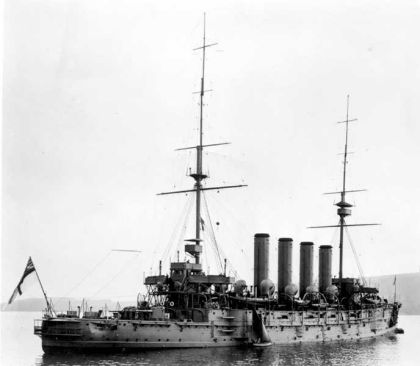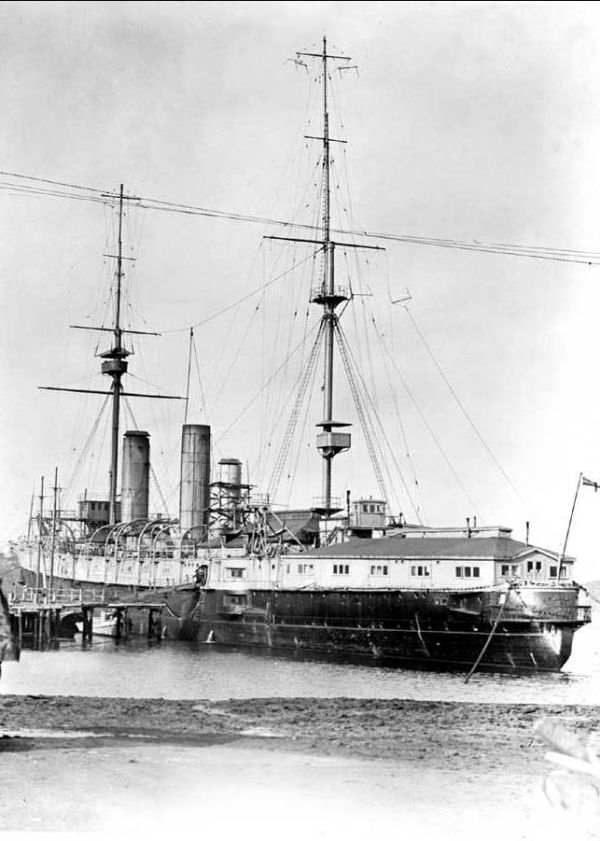Timeline: 1910-1919
HMCS NIOBE
|
1910-1919
|
|||||||||||||||||
|
|||||||||||||||||
On the 6th of September, 1910, HMCS NIOBE was commissioned into the RCN in Devonport, England. She was one of eight sisters of the DIADEM Class of RN 'heavy protected cruisers.' These ships were not like the typical heavy cruisers of the day, in that they were deprived of side armour in order to increase their speed. They were well protected, however, for they were fitted with an armoured deck, armour around their vital parts (sometimes called the Citadel) and the most powerful guns which were really only protected by gun-shields.
Built
by Vickers, Barrow-in-Furness, in England, she was launched on the
20th of February 1897 and was an imposing vessel. She weighed in
at 11,000 tons and was 466 feet long, had a beam of 69 feet and
a draft of 26 feet. She mounted 16-6" guns, 12-12 pounders,
5-3pounders and 2-18" torpedo tubes. The top speed of her reciprocating
engines was between 15 and 17 knots (for short periods and although
she had a design speed of 20.5 knots) and her normal cruising speed
was around 10 knots. At this cruising speed, she would consume about
1 ton of coal for every 10 nautical miles she steamed, and her bunkers
could hold up to 1000 tons of coal. Endurance was, until the creation
of the 'cruising turbine' the only advantage that the stream reciprocating
engine had over the steam turbine. Her crew complement was around
675 all ranks.

HMCS NIOBE, newly arrived in Halifax, 1910.
In the summer of 1911, NIOBE was almost lost by misadventure. On the evening of 30 - 31 July, while on her way from Yarmouth to Shelburne in thick weather and with a heavy tide running, she struck a rock on the Southwest Ledge off Cape Sable. She pounded heavily as the crew went to their stations, the boats were swung out and provisioned, the wireless calls were sent out and all other necessary measures were taken. After about two hours the ship floated clear, and an anchor was promptly lowered. Unfortunately, it did not hold. With the starboard engine room flooded, and the steering gear and port propeller damaged, NIOBE was again in danger of grounding. Though the ship was settling by the stern, the carpenters worked at shoring up the bulkheads and water-tight doors until the water swept them off their feet. A tug finally arrived and took the ship in tow, taking her to Clark's Harbour, from where she was subsequently towed to Halifax. The ship's navigator was reprimanded and dismissed by a Court Martial, and the Officer of the Watch was reprimanded.
NIOBE
was paid off on 6 Sept 1915, reverting to the disposal of the Canadian
authorities who recommissioned her as a depot ship. The great explosion
on December 6th 1917 wrecked NIOBE's superstructure and caused a
number of fires. The damages were repaired, however, and the ship
continued to act as a depot ship until 1920. She was then finally
paid off and was broken up in Philadelphia in 1922.

HMCS NIOBE in Halifax, after her conversion to depot ship.
